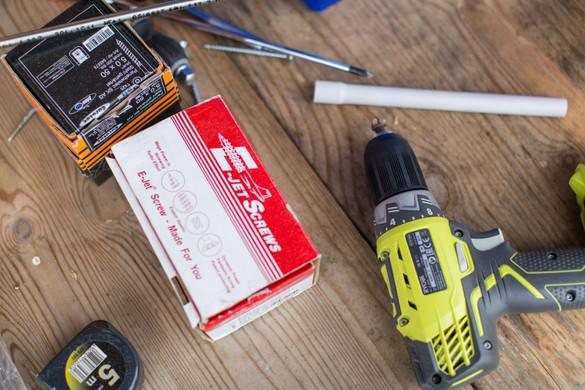How to Hang a Display Case: A Step-by-Step Guide
Mar 29th 2022
If you've just purchased a new display case, congratulations! This is a big investment in the preservation of your sports memorabilia. A quality display case from Collectible Supplies will keep your collectibles looking great for years to come.
To get the most out of your purchase, you must install the case properly. This step-by-step guide will walk you through how to hang a display case safely and securely on your wall.
You Will Need the Following Tools
To properly mount your display case have these tools at hand:
- A level
- A tape measure
- A power drill
- Wall anchors
- Screws sized to your chosen wall anchors
- Your new display case!
- Stud Finder (optional)
- Hammer (optional)
- Nails (optional)
How to Mount a Display Case
Each Collectible Supplies display case comes ready to hang; all you need to do is mount the case to your wall. Follow this quick and easy step-by-step guide to discover the most secure and stable installation options for your wall-mountable display case.
Step 1: Choose your mounting location
First, you’ll need to choose a mounting location. Find a spot on your wall that is strong enough to support the weight of your display case and that is also aesthetically pleasing. It's also important to avoid hanging the case too close to any heat sources, as this could damage or warp the materials.
The most secure option is to mount directly to a stud. The usual space between studs is 16 inches, center to center. To make sure, use your stud finder and determine if mounting to a stud is an option. If your ideal location doesn’t have any appropriately placed studs, you’ll need to opt for anchors and drywall.
Once you've found the perfect spot, it’s time to start measuring.
Step 2: Measure the Width of the Display Case
The first step is to determine how wide your display case is. You will use this measurement to mark where you'll need to drill holes in the wall for the screws. Alternatively, if you’re mounting to a stud, the measurements will mark where you will need to hammer the nails.
Most display cases are between 24 and 36 inches wide. Once you know the width of your display case, use a tape measure to mark out an area on the wall that's equal to the width of the case. For example, if your display case is 30 inches wide, use the tape measure to mark a 30-inch wide area on the wall.
This practice is also great for visualizing the height and overall placement of the case.
Step 3: Drill Holes in the Wall
Once you've marked out an area on the wall for your display case, it's time to drill holes for the screws. Using a drill, create holes in the wall that align with the mounting hardware on the case. These holes should be big enough to fit your wall anchors. If you're not sure what size hole to drill, consult the instructions that came with your anchors.
Step 4: Insert Wall Anchors
With your drill still handy, it's time to insert your wall anchors into the drilled holes. Wall anchors provide extra support and stability while also distributing the weight of your display case more evenly across the drywall.
To insert an anchor, simply thread it into the hole you've drilled and then use your drill or a screwdriver to tighten it in place. Again, if you’re in doubt, consult the instructions that came with your particular anchors to determine how far down to insert them into the holes.
Step 5: Hang Your Display Case
Now, it's finally time to hang your display case! Start by holding the case up to the wall so that the holes you drilled in Step Three line up with the mounting hardware on the back of the case.
Finally, hang the case as you would a large picture frame. And that's it — you're done!
Protecting Your Collectibles Starts With Proper Storage
Whether you go for a tabletop or wall-mounted display case, Collectible Supplies has the storage and display solutions you need to preserve your memorabilia for the long term.
If you found this article helpful, be sure to check out our other how-to guides, like how to safely move your glass display case or how to choose between acrylic and glass.

